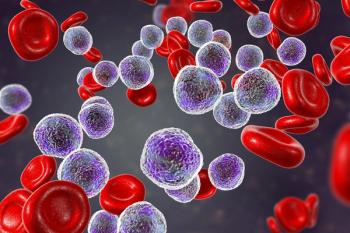
Oncology NEWS International
- Oncology NEWS International Vol 23 No 5
- Volume 23
- Issue 5
Sphincter-Preserving Surgery Plus Preop RT Effective in Distal Segment Rectal Ca
MIAMI BEACH--Sphincter-preserving surgical techniques can be safely and effectively combined with high-dose preoperative radiation for tumors in the most distal segments of the rectum, Mohammed Mohiuddin, MD, said at the American Society for Therapeutic Radiology and Oncology (ASTRO) meeting.
MIAMI BEACH--Sphincter-preserving surgical techniques can be safelyand effectively combined with high-dose preoperative radiationfor tumors in the most distal segments of the rectum, MohammedMohiuddin, MD, said at the American Society for Therapeutic Radiologyand Oncology (ASTRO) meeting.
Dr. Mohiuddin, professor and chairman, Department of RadiationMedicine, University of Kentucky, Lexington, reported that thisapproach resulted in excellent local control, improved survival,and enhanced quality of life, with retention of normal anal sphincterfunction in the majority of patients.
His conclusions are based on results in 70 patients with tumorsin the distal 2 cm of the rectum who were part of a series of259 rectal cancer patients enrolled in a program of high-dosepreop-erative radiation and sphincter-preserving surgery. Allsurgeries were performed by Gerald Marks, MD, who is now professorof surgery, Medical College of Pennsylvania-Hahnemann University.
Expanded Options
"The availability of anastomic stapling devices and the introductionof new surgical techniques have expanded the options for sphincter-preservationsurgery to more distal segments of the rectum, providing an alternativeto abdominal perineal resection and loss of anal function,"Dr. Mohiuddin said.
However, he added, current approaches for surgical resection ofrectal cancer still call for a 2 cm distal margin to prevent excessivelocal disease recurrence. "Sphincter-preservation surgeryhas thus been limited to tumors at least 2 cm proximal to theanal-rectal junction," he said.
In the current series, all patients received a minimum dose of40 to 45 Gy over 4½ weeks at 1.8 to 2.5 Gy per fraction.Patients with unfavorable tumors were given an additional boostof 10 to 15 Gy. Surgery was performed 4 to 10 weeks after thecompletion of radiation therapy. Median follow-up was 4 years.
Overall, there was one perioperative mortality. Two patients didnot have their colostomy closed because of complications. Fourpatients required late colostomies because of local recurrence.Sixty patients (86%) maintained satisfactory long-term sphincterfunction.
Local recurrence of disease following surgery was observed innine patients (13%), and 12 patients (17%) developed distant metastases.The overall 5-year survival rate was 82%.
Dr. Mohiuddin said the results indicate that the use of high-dosepreoperative radiation allows the potential for sphincter preservationin the distal 2 cm of the rectum. "By removing the tumorbut not the rectum, we are giving these patients an improved qualityof life."
Articles in this issue
almost 30 years ago
Earlier Unrelated BMT Is Effective in CML Subgroupalmost 30 years ago
Taxol/Cisplatin Extends Survival in Advanced Ovarian Caalmost 30 years ago
Prostate Cancer Patients Face a Host of Psychosocial Issuesalmost 30 years ago
NSABP to Study Docetaxel in Operable Breast Canceralmost 30 years ago
Panel Recommends Approval of Talc for Malignant Pleural Effusionsalmost 30 years ago
ODAC Recommends Approval of Verluma for Staging of SCLCalmost 30 years ago
Minorities Lack Internet Access to Cancer Research Dataalmost 30 years ago
Fludarabine Produces CRs as First-Line CLL Therapyalmost 30 years ago
M.D. Anderson's C. Stratton Hill Receives Award From American Cancer Societyalmost 30 years ago
Managed Care: The View From Salick Managed CareNewsletter
Stay up to date on recent advances in the multidisciplinary approach to cancer.


















































































